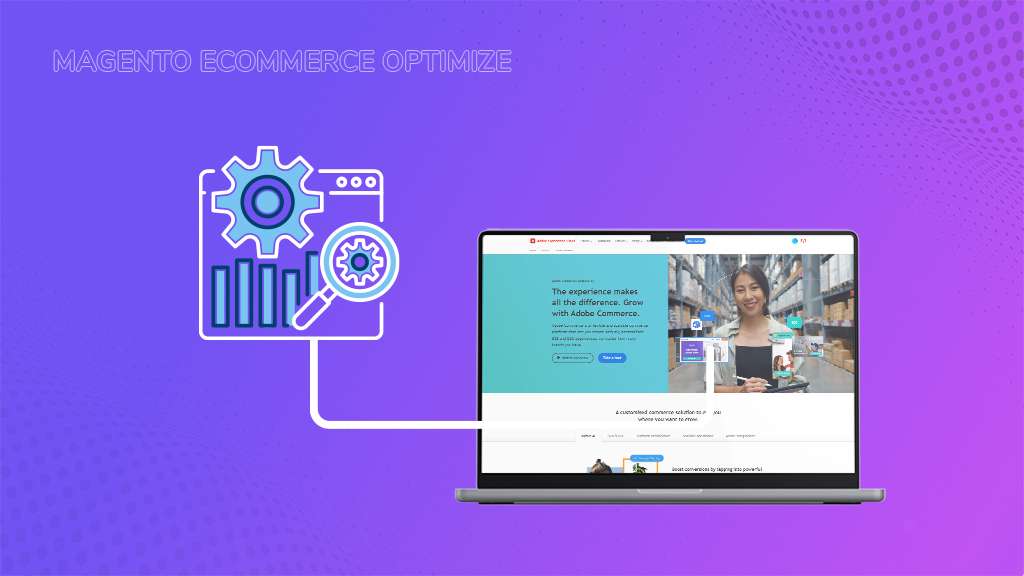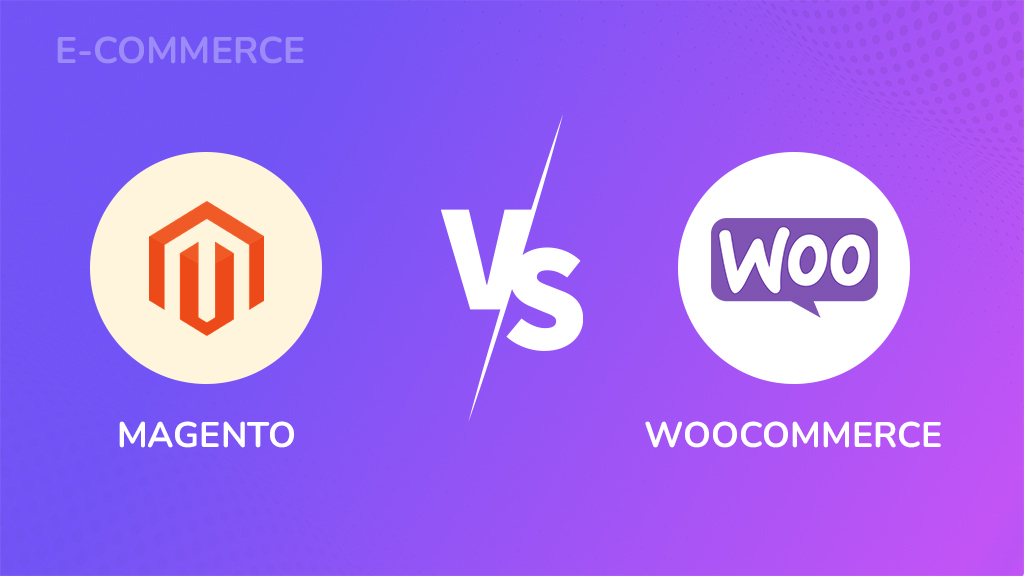
The world of e-commerce is always changing, influenced by advancements in technology, shifts in consumer habits, and emerging market trends. As we near 2024, businesses must keep up with these changes and adjust their strategies accordingly. In this blog post, we’ll explore 11 important e-commerce trends that are set to revolutionize online shopping and shape the success of businesses in the years to come.
Table of Contents
- Understanding the Relevance of E-commerce Trends
- Benefits of E-commerce for Businesses
- 4. Data-Driven Insights
- Overview of the Top E-commerce Trends to Watch in 2024
- 1. Programmatic Advertising
- 2. Customer Relationship Management
- 3. Marketing Automation
- 4. Augmented and Virtual Reality (AR/VR)
- 5. Artificial Intelligence
- 6. The Rise of Voice Search
- 7. Headless Commerce
- 8. Social Payments Simplify the Shopping Experience.
- 9. Hybrid Commerce
- 10. Image Search
- 11. Zero Data Privacy
- Conclusion
Understanding the Relevance of E-commerce Trends
The success of online businesses heavily relies on e-commerce trends in today’s fast-paced digital world. Adapting to these trends is crucial for businesses to stay ahead of the competition, enhance customer satisfaction, and drive growth. Here are some reasons why e-commerce trends are significant.
1. Aligning with Evolving Consumer Expectations
Consumer expectations are not static; they are constantly evolving, shaped by technological advancements, changing lifestyles, and the ever-increasing influence of social media. E-commerce trends provide businesses with invaluable insights into these dynamic shifts in consumer preferences.
By keeping up with emerging trends, businesses can actively adjust their strategies, guaranteeing their offerings, and services are. Such shopping experiences seamlessly match the expectations of their intended audience.
2. Innovating to Enhance Customer Experiences
E-commerce trends often introduce ground-breaking technologies, innovative features, and transformative functionalities that can revolutionize the online shopping experience. Businesses that embrace these innovations are poised to create more engaging, interactive, and personalized experiences for their customers.
3. Securing a Competitive Edge
In the competitive arena of e-commerce, early adopters of emerging trends gain a significant advantage. Businesses that proactively identify and integrate relevant trends into their strategies are perceived as pioneers, attracting customers who value cutting-edge technology and a seamless shopping experience. This competitive edge can translate into increased market share, brand loyalty, and ultimately, business growth.
4. Navigating Market Dynamics with Agility
The e-commerce landscape is in a constant state of flux, driven by technological advancements, evolving consumer behaviours, and emerging market forces. Businesses that fail to understand and adapt to these trends risk becoming outdated and falling behind their more agile competitors. By staying informed about emerging trends, businesses can anticipate market shifts, adapt their strategies, and maintain a competitive edge amidst change. By staying aware of trends, companies can predict market changes, adjust strategies, and maintain a competitive advantage during transformation.
5. Shaping the Future of Online Success
E-commerce trends provide a glimpse into the future of online shopping, offering businesses a roadmap for long-term success. Investing in emerging e-commerce trends, such as AI-powered recommendations and social commerce experiences, establishes businesses as innovators and shapes the future of online retail. This proactive approach increases success and impacts the entire industry.
Benefits of E-commerce for Businesses
The rise of e-commerce has brought about a paradigm shift in the retail industry, transforming how businesses operate and interact with customers. E-commerce offers a multitude of benefits that have redefined the retail landscape. Here are some of the key advantages that businesses can enjoy with e-commerce:
1. Global Reach
E-commerce has eliminated geographical barriers, allowing businesses to expand their reach beyond their local markets. With e-commerce, businesses can tap into a global audience, diversify their customer base, and increase their sales potential.
2. Lower Costs
E-commerce has significantly reduced the overhead costs associated with traditional brick-and-mortar stores. Businesses no longer need to invest in expensive real estate, inventory management systems, and large sales teams. E-commerce platforms provide a cost-effective alternative, allowing businesses to operate with a leaner infrastructure and lower overhead costs. This reduction in costs contributes to increased profit margins and financial flexibility.
3. Improved Efficiency
E-commerce has streamlined various aspects of business operations, leading to enhanced efficiency and productivity. Inventory management becomes more efficient with real-time tracking of stock levels, automated reordering systems, and data-driven demand forecasting. Order processing is streamlined through automated order routing, digital payment gateways, and automated order fulfillment systems. Customer service is also enhanced through self-service portals, live chat support, and personalized customer interactions.
4. Data-Driven Insights
E-commerce provides businesses with valuable data-driven insights that can help them make informed decisions. E-commerce allows businesses to track customer behavior, preferences, and purchase history. By helping them tailor marketing strategies and products to meet customer needs.
Overview of the Top E-commerce Trends to Watch in 2024
Let’s examine the compilation of emerging global e-commerce trends across the world.
1. Programmatic Advertising
A Data-Driven Approach in a different way. Utilizing data sets to pinpoint and target the ideal audience for each advertisement, programmatic advertising is a revolutionary technique. This strategy ensures personalized ads based on individual interests and habits, providing a relevant user experience. Programmatic advertising also uses retargeting to consistently reach engaged users, maximizing ROI for businesses.
Another exciting trend in advertising is AI-powered contextual ads, which blend seamlessly with the surrounding content for a more natural viewing experience. By displaying relevant ads that align with the video content, viewers are more likely to engage and take action, leading to increased sign-ups and conversions.
2. Customer Relationship Management
CRM provides e-commerce businesses with the ability to gain a deeper understanding of their customers’ needs, preferences, and behavior patterns, empowering them to tailor their offerings and interactions accordingly. This valuable knowledge allows businesses to create personalized experiences that enhance relationships and foster trust with individual customers.
By prioritizing customer satisfaction and addressing their unique requirements, e-commerce businesses can establish a loyal customer base that drives sustainable growth. Implementing well-designed loyalty and reward programs is a highly effective CRM strategy. Research indicates that 75% of customers prefer companies that offer such programs. These programs not only incentivize repeat purchases and encourage customer engagement but also have a significant impact on key business metrics.
3. Marketing Automation
While many associate marketing automation with automated email marketing and social media scheduling, its scope extends far beyond these basic functionalities. Today, marketing automation has evolved into a powerful tool encompassing a wide range of digital marketing activities.
The growing adoption of marketing automation is undeniable, with 49% of businesses currently leveraging its capabilities. Furthermore, This number is expected to rise steadily, indicating its immense potential to revolutionize the marketing landscape.
4. Augmented and Virtual Reality (AR/VR)
The utilization of AR and VR technologies for e-commerce brands is on the rise as they seek to enhance the customer journey. These innovations, ranging from virtual try-on experiences for clothing and furniture to immersive product demonstrations, are playing a significant role in shaping the future of online shopping. The response from consumers towards AR and VR in e-commerce has been overwhelmingly positive.
According to a recent survey, an impressive 71% of consumers are more inclined to shop with a brand that incorporates AR technology. Additionally, research indicates that companies that leverage AR/VR content witness a substantial 94% increase in conversion rates, highlighting the tangible business benefits that these technologies offer.
5. Artificial Intelligence
In recent times, intelligent algorithms driven by artificial intelligence (AI) have emerged as a robust solution to tackle these obstacles. These algorithms possess the ability to deeply learn, allowing them to analyze extensive customer data, identify patterns, predict behavior, and personalize experiences in real-time.
As per a report from Business Insider, retailers who have implemented AI-powered personalization strategies have witnessed remarkable sales growth ranging from 6% to 10%. This compelling evidence highlights the transformative potential of AI in the realm of e-commerce.
While AI offers numerous advantages, its effectiveness heavily relies on the quality and quantity of available data. This can be a challenge for smaller e-commerce businesses that lack substantial datasets. However, innovative solutions are emerging to address this concern.
One such solution involves collaborating with third-party providers who offer AI-driven tools and services. By utilizing these resources, smaller businesses can access advanced analytics and personalization capabilities that were previously inaccessible due to data limitations.
6. The Rise of Voice Search
To keep up with the increasing popularity of voice search, e-commerce businesses must adapt proactively. It is no longer optional to optimize content for voice search, but rather a strategic imperative to ensure visibility and capture a growing segment of the market. Google’s recent guidelines highlight the importance of textual content for voice search optimization, which can significantly boost discoverability through rich snippets and knowledge graphs.
While visual elements are valuable, they should not be the sole focus of optimization efforts as they do not contribute to voice search ranking. By adopting voice search optimization and incorporating voice-activated buttons and specialized apps, e-commerce companies can establish themselves as leaders in this revolutionary technology. This proactive strategy is essential for attracting new customers, improving customer happiness, and achieving long-term success in the online market.
7. Headless Commerce
Headless commerce represents a revolutionary shift in the e-commerce industry, providing a cutting-edge solution that separates the front-end and back-end of websites and applications. This innovative structure utilizes application programming interfaces (APIs) to seamlessly deliver content to any chosen front-end framework, liberating businesses from traditional constraints and offering unparalleled flexibility.
The implications of this decoupling are extensive. Headless commerce eliminates the limitations of traditional e-commerce platforms, enabling shopping experiences beyond the confines of desktops, laptops, and mobile devices. Consumers can now explore and purchase products through the ever-expanding ecosystem of Internet of Things (IoT) devices, including smart speakers, smart fitness trackers, and more.
This transformative approach brings forth a multitude of advantages for e-commerce businesses:
1. Unified Shopping Experiences
The headless architecture unifies the customer journey across all touchpoints, ensuring smooth and consistent interactions regardless of the device or platform chosen.
2. Enhanced Flexibility and Agility
By separating the front-end and back-end, businesses gain the ability to independently develop and customize their platforms, allowing them to swiftly adapt and innovate in response to evolving market trends and customer preferences.
3. Omnichannel Selling
Headless technology facilitates seamless integration with various sales channels, empowering businesses to implement and manage omnichannel strategies with greater efficiency and effectiveness.
4. Future-Proof Technology
The decoupled nature of headless architecture guarantees scalability and adaptability for the future, paving the way for seamless integration with emerging technologies and upcoming innovations in the e-commerce realm.
8. Social Payments Simplify the Shopping Experience.
The emergence of social media has sparked a new trend in the world of e-commerce: social payments. Spearheaded by PayPal, social payments allow users to transfer money directly through social media platforms. This user-friendly feature has gained widespread acceptance, with major platforms such as Apple Pay, Google Wallet, Facebook Payments, and Twitter Buy introducing their variations of social payment solutions.
Similar to virtual bank accounts, social media users can leverage these platforms to directly purchase products or make payments to online retailers that accept these payment methods. The popularity of social payments can be attributed to their seamless integration into the everyday lives of social media users, providing a convenient and familiar means of transferring funds.
9. Hybrid Commerce
The e-commerce landscape is transforming a phygital model, which combines online channels and physical retail experiences. This integrated approach aims to bridge the gap between the digital and physical worlds, offering customers a consistent shopping experience across all touchpoints. At the core of this phygital revolution is hybrid commerce, also known as omnichannel selling. It involves the strategic integration of various channels and platforms, such as websites, mobile apps, social media, and brick-and-mortar stores. By adopting
With this holistic approach, businesses can create a seamless customer journey that seamlessly connects online and offline interactions. One prime example of omnichannel selling is click-and-collect, or buy online, pick up in-store (BOPIS). This service allows customers to conveniently make purchases online and collect them at a physical store or designated pickup point. This flexibility provides customers with the convenience of online shopping while still enjoying the satisfaction of in-store interaction.
10. Image Search
Visual search, also referred to as image shopping, is a transformative trend that is currently reshaping the e-commerce landscape. By simply pointing their cameras at products, users can now effortlessly search for and buy them. This cutting-edge approach leverages image recognition and machine learning algorithms to identify objects and link them to corresponding online listings, streamlining the shopping process.
To capitalize on this burgeoning trend, several photo apps such as Google Images have emerged. These apps let users snap product photos and instantly access relevant information like descriptions, prices, and links for online buying. This tech has the power to revolutionize online shopping, offering a more intuitive and immersive experience for consumers.
11. Zero Data Privacy
As the issue of data privacy becomes increasingly important to consumers, businesses must adapt their data collection practices to comply with changing regulations and maintain customer trust. According to a recent survey conducted by Cisco, 86% of consumers prioritize data privacy and demand transparency and control over how their personal information is used.
Nearly half of the respondents (47%) have switched companies due to unsatisfactory data policies and practices. To address these concerns, Apple has introduced App Tracking Transparency, which allows Internet users to opt out of data tracking for affiliate marketing or Facebook advertising purposes. Similarly, Google Chrome plans to phase out support for third-party cookies by mid-2023, further limiting the availability of consumer data from traditional sources.
Conclusion
The landscape of e-commerce is evolving rapidly! To thrive in 2024, it is imperative to stay ahead of the curve. Consider these emerging e-commerce trends as your compass: prioritize investments in smarter technology, prioritize customer satisfaction, and foster genuine connections that extend beyond mere transactions. Embrace these e-commerce trends and innovate fearlessly bear in mind that a mere website is no longer sufficient.








